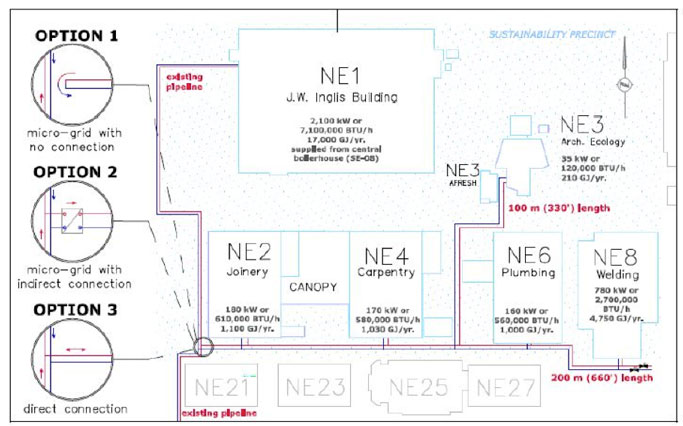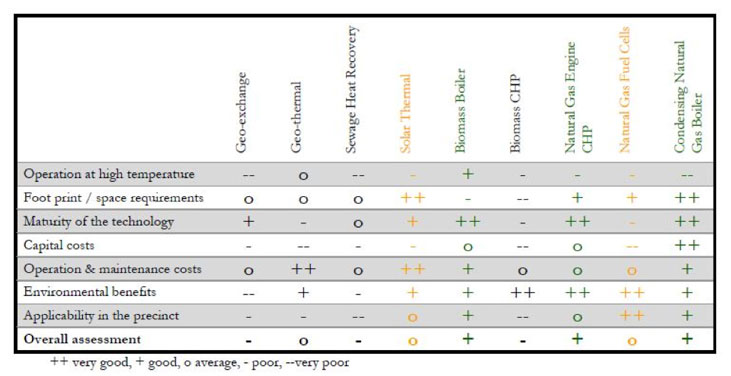District heating (sometimes called district energy or thermal grids) consists of a network of pipes that supplies heat to a ‘district’ of buildings for space heating, domestic hot water, and in some cases even cooling purposes. This network can be fed by one central or several decentralized heating sources, including waste heat (also called heat recovery), renewables, and combined heat and power.
Scandinavia, the countries of the former Soviet Union and continental Europe use district heating on a much larger scale than Canada. In some cities, more than 80% of the population is supplied by district heating.
The School of Construction and the Environment Factor IV team is hoping to build a micro thermal grid for education. The idea is to connect all 7 buildings located in the Factor IV so that they “collaborate” for heating.
As for the electric grid, a thermal grid’s operating parameters are defined by the user’s requirements and the grid infrastructure. Electric grids are designed to a certain voltage. The key parameter of a heating network is the supply temperature. Other than the voltage of an electric network that can be stepped up or down, the supply temperature of a heating network can be reduced, but not easily increased.
In order to use low-temperature heat sources, the heating network will have to be low temperature as well. This leaves three options for heating the precinct with district energy:
Option 1: A micro-grid that connects the buildings in the precinct only. The largest consumer, the J.W. Inglis Building (NE-01), could become part of this precinct (Option 1 A) or remain being supplied by the existing central boiler plant (Option 1 B). With some modifications to the buildings’ heating appliances, this grid could be operated at a low temperature.
Option 2: A sub-grid, operating at low temperatures. Similar to the low-voltage distribution network at the far end of an electric network, the precinct would receive heat from the boiler plant, but could not feed any heat back into the high-temperature pipeline. The flow of heat energy would be one-way only, from the high-temperature to low-temperature network. Heat generated in the precinct would have to be consumed inside the sub-grid and could only be exported to the existing heating network using a heat pump.
Option 3: An extension of the existing system to the remaining, currently independently-heated buildings in the precinct. Supply and return temperatures would be the same as for the current heating network, constraining the use of low-temperature heat sources. Preheating the return line might be still viable though.
The heat source options the Factor IV team is looking at are included in the table below (Various Heat Options).
Below are links to the latest discussion around building a thermal grid for education:
DE_routing-2015-05-12 Pipe_Layout
Energy Conservation: n/a
More Information:
Download the Pre-Feasibility study


Leave a Reply